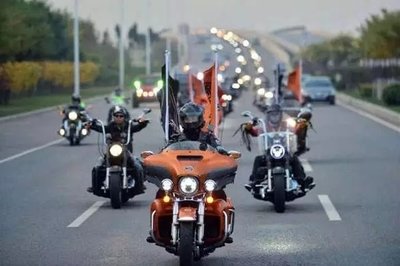
Motorcycle Gear: Functions and Selection Guide
CustomStoreMCBiker
Riding a motorcycle is not just about the thrill of the open road; it’s also about safety, comfort, and performance. Whether you’re a seasoned rider or a beginner, having the right motorcycle gear is essential. This guide will walk you through the critical functions of motorcycle gear and help you choose the best options for your riding style and needs.
Why Motorcycle Gear Matters
Motorcycle gear is more than just a fashion statement—it’s a necessity. Unlike car drivers, motorcyclists don’t have a metal shell to protect them. Proper gear serves multiple functions:
- Safety: Reduces the risk of severe injuries in case of an accident.
- Weather Protection: Shields against wind, rain, heat, and cold.
- Comfort: Enhances the riding experience by reducing fatigue and distractions.
- Performance: Some gear improves aerodynamics and mobility.
Essential Motorcycle Gear and How to Choose the Best
1. Helmets – Your Lifesaver
A helmet is the most crucial piece of safety gear. It protects your head from impact, reducing the risk of fatal injuries.
Types of Helmets:
- Full-face helmets: Offer maximum protection and coverage.
- Modular helmets: Combine full-face protection with flip-up convenience.
- Open-face helmets: Provide less coverage but more ventilation.
- Half helmets: Minimal coverage, mainly for style and lightweight comfort.
Key Features to Look for:
- Safety Certification: DOT, ECE, or Snell-approved helmets.
- Material: Fiberglass, polycarbonate, or carbon fiber for durability.
- Ventilation: Essential for comfort, especially in hot weather.
- Fit and Comfort: A snug but comfortable fit without excessive pressure.
2. Motorcycle Jackets – Protection and Style
A good motorcycle jacket not only enhances your look but also provides essential protection against abrasions, impacts, and weather conditions.
Types of Motorcycle Jackets:
- Leather jackets: Classic style, excellent abrasion resistance.
- Textile jackets: Lightweight and breathable, ideal for various climates.
- Mesh jackets: Best for hot weather, offering ventilation while keeping protection.
Key Features to Consider:
- Armor: CE-rated armor in shoulders, elbows, and back.
- Material: Look for abrasion-resistant materials.
- Ventilation: Adjustable vents for different weather conditions.
- Waterproofing: Essential for rainy climates.
3. Motorcycle Gloves – Grip and Protection
Your hands are vulnerable during a crash, making gloves a critical piece of gear.
Types of Gloves:
- Gauntlet gloves: Extend past the wrist, offering extra protection.
- Short-cuff gloves: More breathable and flexible.
- Winter gloves: Insulated and waterproof.
Key Features:
- Reinforced palms: To prevent abrasion injuries.
- Touchscreen compatibility: Allows you to use GPS or mobile devices.
- Knuckle protection: Hard armor or reinforced padding for impact resistance.
4. Motorcycle Pants – Safety for Your Lower Body
Riders often overlook pants, but they are just as important as jackets and helmets.
Types of Motorcycle Pants:
- Leather pants: Best for abrasion resistance and high-speed riding.
- Textile pants: More versatile and comfortable.
- Kevlar jeans: Stylish with reinforced protection.
Key Features to Consider:
- Armor placement: Knee and hip protection.
- Stretch panels: For comfort and flexibility.
- Waterproofing: Helps in rainy conditions.
5. Motorcycle Boots – Foot and Ankle Protection
A proper pair of motorcycle boots can prevent fractures and abrasions in an accident.
Types of Motorcycle Boots:
- Racing boots: High protection, best for track riders.
- Touring boots: Comfortable for long-distance rides.
- Urban boots: Stylish and functional for everyday riding.
Key Features to Look for:
- Ankle support: To prevent twisting injuries.
- Slip-resistant soles: Better grip on wet roads.
- Reinforced toe and heel: Added protection against impact.
6. Riding Suits – Full-Body Protection
A one-piece or two-piece riding suit is perfect for long rides and professional racing.
Types of Riding Suits:
- Leather suits: Maximum protection and aerodynamics.
- Textile suits: Comfortable for touring and adventure riding.
Key Features:
- CE-approved armor for key impact areas.
- Ventilation zippers for breathability.
- Adjustability for a snug fit.
Choosing the Right Gear Based on Your Riding Style
Your choice of gear should align with how and where you ride.
For Sportbike Riders
- Full-face helmet for aerodynamics and safety.
- Leather jacket and pants for abrasion resistance.
- Racing boots and gauntlet gloves for maximum protection.
For Cruiser Riders
- Half or open-face helmet for classic style.
- Leather jacket and Kevlar jeans for protection and comfort.
- Short-cuff gloves and urban boots for casual riding.
For Touring and Adventure Riders
- Modular helmet for convenience.
- Textile suit with waterproofing for all-weather adaptability.
- Comfortable boots and gloves for long rides.
For Commuters
- Lightweight helmet (full-face or modular) for safety and convenience.
- Armored textile jacket and jeans for casual but effective protection.
- Breathable gloves and urban boots for daily riding ease.
Final Thoughts
Motorcycle gear is a vital part of riding safely and comfortably. Whether you're an experienced rider or just starting, investing in high-quality gear can make a significant difference in your safety and enjoyment on the road. Prioritize gear that fits well, offers adequate protection, and suits your riding style. Ride safe and enjoy the journey!
Want to learn more about motorcycle equipment, news and club knowledge. Please click on the mcbikercustomstore.us to learn more.









